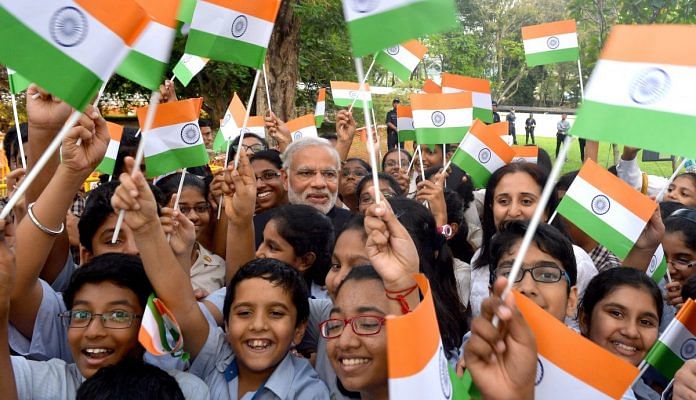The Samagra Shiksha Abhiyaan combines elements from the UPA’s Sarva Shiksha Abhiyan and other schemes, but officials insist it’s a necessary reform.
New Delhi: The ministry of human resource development recently announced a new, integrated scheme of school education, Samagra Shiksha Abhiyan, which covers students from Class 1 to 12, to ensure universal access of education.
But scratch the surface and it closely resembles a UPA government scheme.
Opposition parties and critics have accused the Narendra Modi government of repackaging and renaming several UPA schemes in its four years so far. They say ‘Digital India’ used to be called the National e-Governance Plan, ‘Swachh Bharat’ was Nirmal Bharat and ‘Make in India’ was called the National Manufacturing Plan under the UPA regime. Samagra Shiksha Abhiyan is the latest to join the list.
What has changed and what hasn’t
Samagra Shiksha Abhiyan is a merger of the UPA’s flagship programme Sarva Shiksha Abhiyan (SSA) and the Rashtriya Madhyamik Shiksha Abhiyan (RMSA) with a scheme for educating teachers.
The new scheme, just like the SSA and the RMSA, is designed to ensure the opening of new and upgraded schools from Class 1 to 12, with an addition of giving preference to children from areas affected by Left-Wing Extremism, border areas, and backward blocks.
Transport facility, which existed in the previous schemes, is part of the new scheme as well, along with the provision of free books and uniforms.
Other things in common include the reimbursement of 25 per cent of the admission fees for economically weaker sections, and the intervention for enhancement of learning outcomes and developing modules for teacher-learning.
Digital initiatives in schools are also more or less the same, with a slight improvement proposed in the new scheme. While the existing scheme only lists Computer Aided Education to be provided to students at both primary and upper primary level, the new scheme specifies that students will get access to laptops along with software and hardware support. The provision of introducing digital boards for smart classes has also been included in the scheme.
The provision for vocational education for students of Class 9 and above is also constant.
The new addition is the increased emphasis on teacher training. Under the new scheme, teachers will be expected to take part in small or medium research activity and will be expected to publish this research in journals.
‘Pure optics’
The ministry’s note on the new scheme reads: “The integrated scheme on school education envisages the ‘school’ as a continuum from pre-school, primary, upper primary, secondary to senior secondary levels. The vision of the scheme is to ensure inclusive and equitable quality education from pre-school to senior secondary stage in accordance with the Sustainable Development Goal (SDG) for Education.”
However, the opposition has called the move “pure optics”. Speaking to ThePrint, Jitin Prasada, who was minister of state for HRD in the UPA government, said: “This is pure optics and nothing else. What purpose are they going to achieve by merging existing schemes? They are just doing this because they have no result to show in terms of numbers and 2019 is nearing.
“Sarva Shiksha Abhiyan was a flagship scheme of the previous government and achieved results. What has the current government achieved in education in last four years?”
A senior official of the HRD ministry, on the other hand, said: “One of the major hurdles of having segments in the existing schemes was that there was no flexibility in utilising funds from one segment to another. Now states will be free to use the funds in the areas of education that need it.
“The new scheme is meant to bring in a holistic approach and administrative reforms.”






